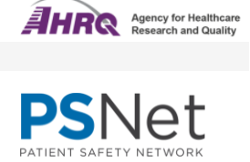Mary Madison, RN, RAC-CT, CDP
Clinical Consultant – Briggs Healthcare

“The purpose of this primer is to provide updated information to the patient safety community about the challenges of ensuring the safe care of older adults in Medicare and Medicaid certified nursing homes (NHs) associated with the COVID-19 pandemic, and the federal and state efforts taken to mitigate these challenges. This serves as an update to the original primer, “Coronavirus Disease 2019 (COVID-19) and Safety of Older Adults Residing in Nursing Homes,” originally appearing in PSNet on April 21, 2020, and updated July 30, 2020. This primer is a compilation of information that has impacted the safety of older adults and has been published on federal websites, in professional and academic literature, and in the press. It puts into perspective that, while less than 1% of the U.S. population live in long-term care facilities (e.g., NHs, assisted living) and comprise only 1% of total positive U.S. cases, older adult residents in NHs accounted for 37% of COVID-19 deaths overall until the vaccines became available in December 2020 (CMS COVID-19 Nursing Home Data website). Various factors associated with COVID-19 that negatively impacted patient safety and resulted in poor outcomes for nursing home residents are discussed in this primer, including NH staffing, racial and ethnic disparities, and poor quality of care.”
This primer was originally published April 21, 2020, and updated February 24, 2022.
The contents include:
- Incidence and Prevalence of COVID-19 in U.S. Nursing Homes
- Challenges with U.S. Nursing Home Environment and COVID-19
- The CMS Five-Star Quality Rating System and COVID-19 Incidence
- Nurse Staffing and Infection Control
- The Impact of COVID-19 on NH Residents, Families, and Racial and Ethnic Minorities
- Racial and Ethnic Disparities
- Federal and State Response to COVID-19 in Nursing Homes
- COVID-19 Reporting and Testing
- Infection Control Training and Enforcement
- AHRQ ECHO National NH COVID-19 Action Network
- New Reporting Regulations
- Lifting COVID-19 Restrictions
- Coronavirus Commission for Safety and Quality in NHs
- COVID-19 Vaccinations
- Booster Vaccinations
Conclusion
The COVID-19 pandemic swept through the United States in 2020 and 2021, presenting a significant challenge to healthcare systems throughout the nation. Nowhere was there a more devastating effect than on older adults living in NHs. While considerable efforts were put forth by the federal and state governments, the NH industry, and professional organizations, the fact remains that by the end of 2021 there were almost 750,000 NH resident confirmed cases and 142,000 resident deaths, as well as over 700,000 NH staff confirmed cases and 2,100 staff deaths. This pandemic revealed weaknesses in the infection control and prevention programs in many U.S. NHs and pointed out some potential gaps in the survey processes meant to insure quality of care. And, although many NH residents and staff have been vaccinated and the numbers of cases and deaths have decreased overall, the uptick in cases from the Delta and Omicron variants may present a persistent danger to older adult NH residents. Waning vaccination immunity six months after receiving the vaccine series points to the need for booster shots, without which older adults are at even higher risk for contracting COVID-19. It is essential that NH residents, staff, and visitors be vaccinated and up to date with CDC’s COVID-19 vaccination guidelines in order to provide a safe environment for older adults.
This primer focuses on the vulnerability of the older adult NH population to the SARS-CoV-2 virus and highlights the significant efforts of the federal and state governments to implement policies and regulations aimed at reducing the negative impact of the COVID-19 pandemic on adults 65 years and older in NHs. It also emphasizes the importance of the NH industry, healthcare professionals, and federal and state governments working collaboratively to make the necessary long-lasting policy changes to sustain patient safety improvements for this population.
[I’ve bolded and italicized the verbiage in the conclusion.]
